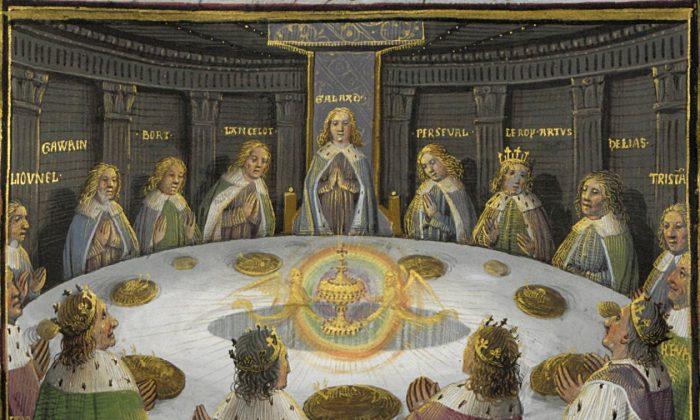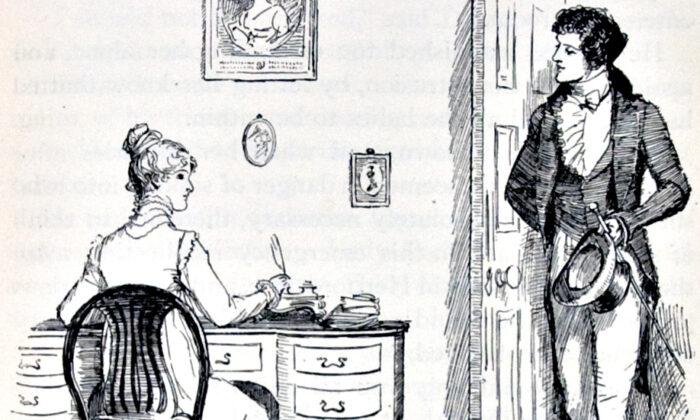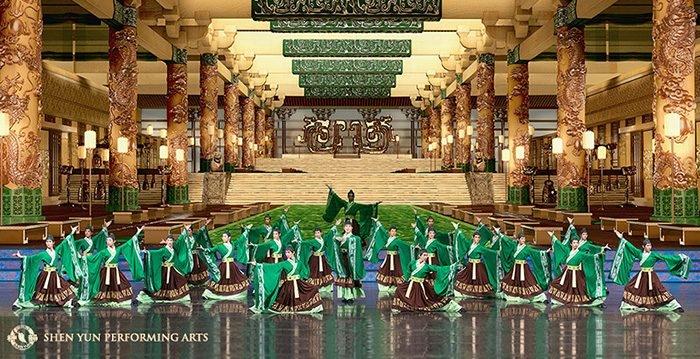Canadians don’t normally look at rugs as art, but one company wants to change that.
Weavers Art, a supplier of hand-woven carpets in Toronto, teamed up with designer Johane Lefrançois-Deignan to attract Canadian artists to the ancient craft of rug design.
Their juried competition in September attracted over 200 designs from artists ranging from graphic and interior designers to architects. The ten winning entries will be unveiled at the Interior Design Show in Toronto this weekend.
“The first thing you’re going to see going through that show is ten gorgeous 8 by 10 big-colour, big-design rugs with huge banners of a head shot of each of the artists and their story,” says Catherine Shea, director of marketing for Weavers Art.
The main objective of the competition, says Shea, was to generate an interest in rug design—popular in Nepal and Europe but little known in Canada—and tap into previously unknown Canadian talent.
“Part of our mandate at Weaver’s Art is to promote more Canadian design,” she says. “We really feel that there is a great talent base to work off of here in Canada, so we thought, ‘Well, [the competition] is a good way of finding out who those people are.’”
The Interior Design Show website is promoting the rug exhibit as a “new exciting platform for Canadian designers and artists.”
The concept of rug design is relatively new to Canada, Shea says, where most still look at rugs as part of the furniture. Weavers Art wants to change that and introduce the concept of rugs “as a piece of fine art” suitable for both the floor or as a wall hanging.
She says there’s been shift in recent years from traditional, highly decorative Persian rugs to Tibetan rugs which are more in contemporary in design. She likens the change to the evolution that has occurred in other art forms.
The weaving process is completely different for both types of rug, explains Shea.
“Tibetan allows you a lot more freedom in terms of the design that you’re doing, the randomness or the organicness of it, whereas traditional Persian designs are basically mapped out. They’re very symmetrical and known for their high detail and high knot count.”
The ten winning designs were hand woven in Nepal, and Weavers Art was responsible for incorporating the designs into rugs, an exciting process for the designers.
Weavers Art, a supplier of hand-woven carpets in Toronto, teamed up with designer Johane Lefrançois-Deignan to attract Canadian artists to the ancient craft of rug design.
Their juried competition in September attracted over 200 designs from artists ranging from graphic and interior designers to architects. The ten winning entries will be unveiled at the Interior Design Show in Toronto this weekend.
“The first thing you’re going to see going through that show is ten gorgeous 8 by 10 big-colour, big-design rugs with huge banners of a head shot of each of the artists and their story,” says Catherine Shea, director of marketing for Weavers Art.
The main objective of the competition, says Shea, was to generate an interest in rug design—popular in Nepal and Europe but little known in Canada—and tap into previously unknown Canadian talent.
“Part of our mandate at Weaver’s Art is to promote more Canadian design,” she says. “We really feel that there is a great talent base to work off of here in Canada, so we thought, ‘Well, [the competition] is a good way of finding out who those people are.’”
The Interior Design Show website is promoting the rug exhibit as a “new exciting platform for Canadian designers and artists.”
The concept of rug design is relatively new to Canada, Shea says, where most still look at rugs as part of the furniture. Weavers Art wants to change that and introduce the concept of rugs “as a piece of fine art” suitable for both the floor or as a wall hanging.
She says there’s been shift in recent years from traditional, highly decorative Persian rugs to Tibetan rugs which are more in contemporary in design. She likens the change to the evolution that has occurred in other art forms.
The weaving process is completely different for both types of rug, explains Shea.
“Tibetan allows you a lot more freedom in terms of the design that you’re doing, the randomness or the organicness of it, whereas traditional Persian designs are basically mapped out. They’re very symmetrical and known for their high detail and high knot count.”
The ten winning designs were hand woven in Nepal, and Weavers Art was responsible for incorporating the designs into rugs, an exciting process for the designers.
“Many of them had never designed a rug before so that was an interesting exercise for them to kind of put their creativity into another dimension,” says Shea, adding that she is looking forward to working with the designers to develop more collections.
Weaving is a well developed craft that gives the artist “the freedom to sort of look at the design on the piece of paper and say, ‘this is how I would translate it.’”
“There are so many different stages now that go into it and that’s what you’re getting when you get an original rug versus something that comes off the assembly line,” she adds.
The ten winning rug designs will be on display at the Interior Design Show from Friday, Jan. 22 to Sunday, Jan. 24, at the Metro Toronto Convention Centre.
The rugs will be sold in a silent auction at the show, with proceeds going to two charities: Rugmark Foundation, which provides education for rug making communities, and DAREarts, an organization offering art education to at-risk children in Toronto. Following that, the company will produce up to 50 limited edition rugs of each design.
“The hope is that we will do this every year within our company and we will be able to source and promote design talent right here in Canada, and hopefully over the years collections will emerge that we carry at Weaver’s Art of these great designs that people have submitted to us,” says Shea.
The Interior Design Show, the largest Canadian contemporary design event, is opening this week-end (Jan 21-24). For more information, visit www.interiordesignshow.com








Friends Read Free